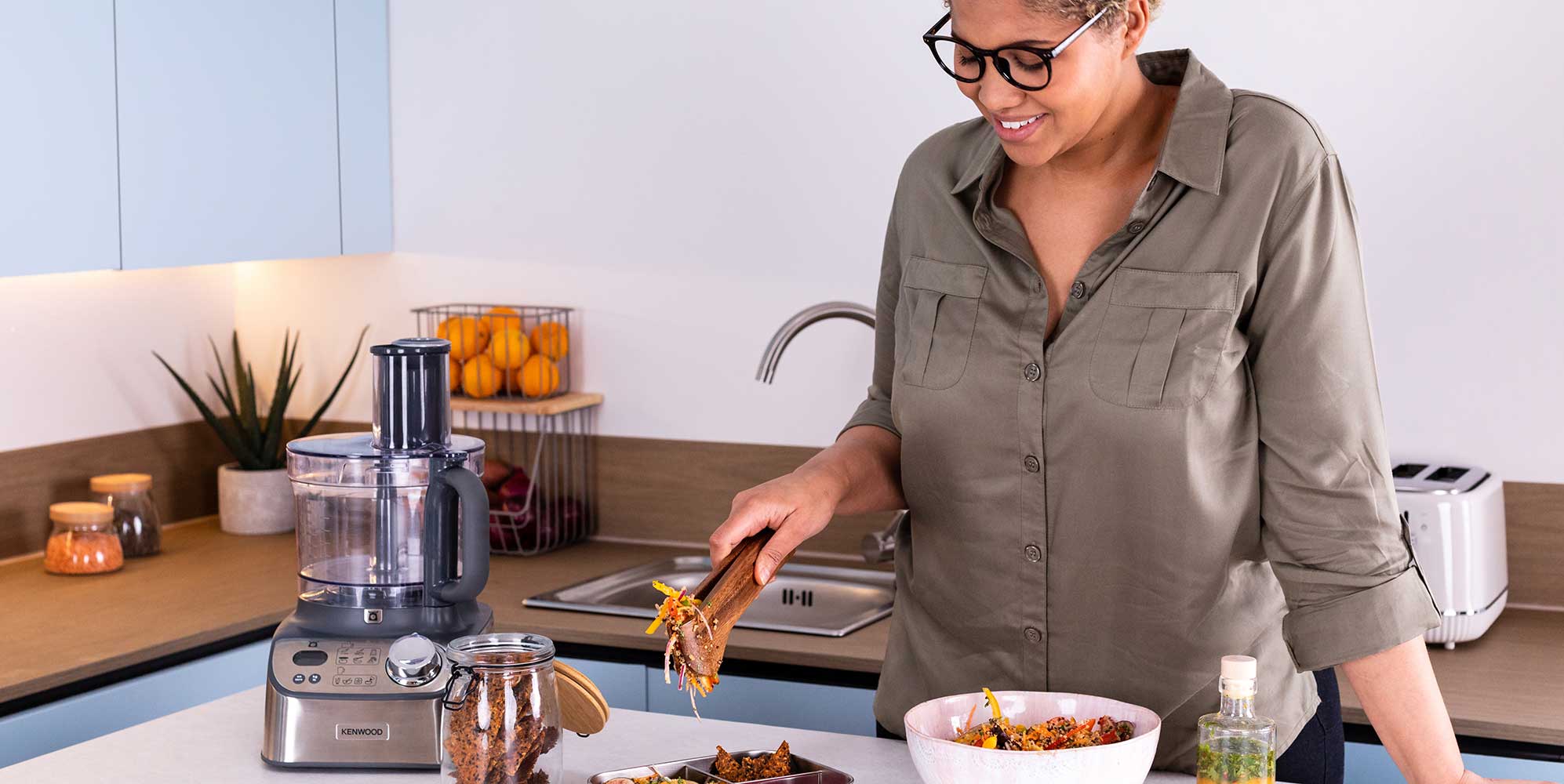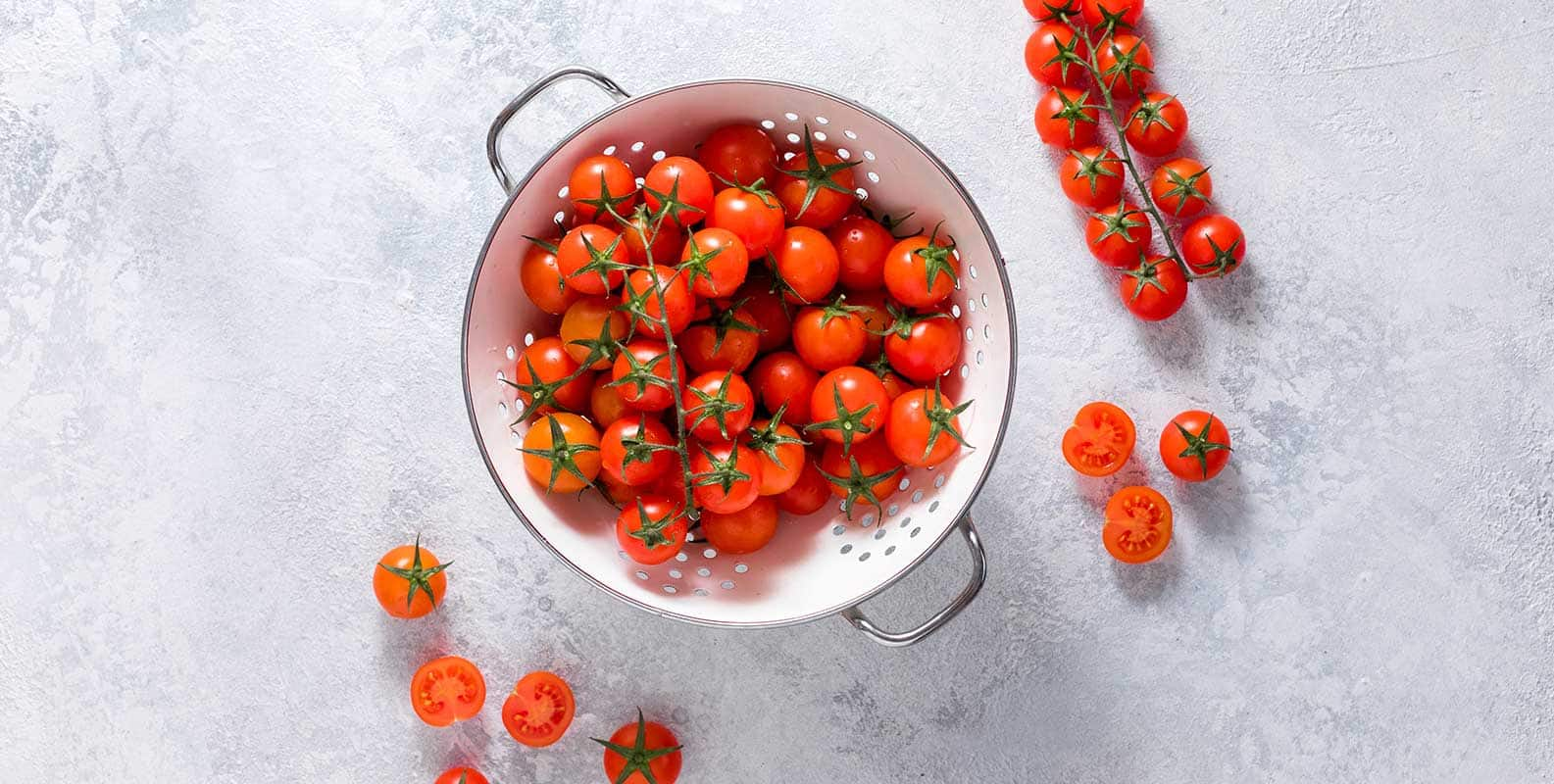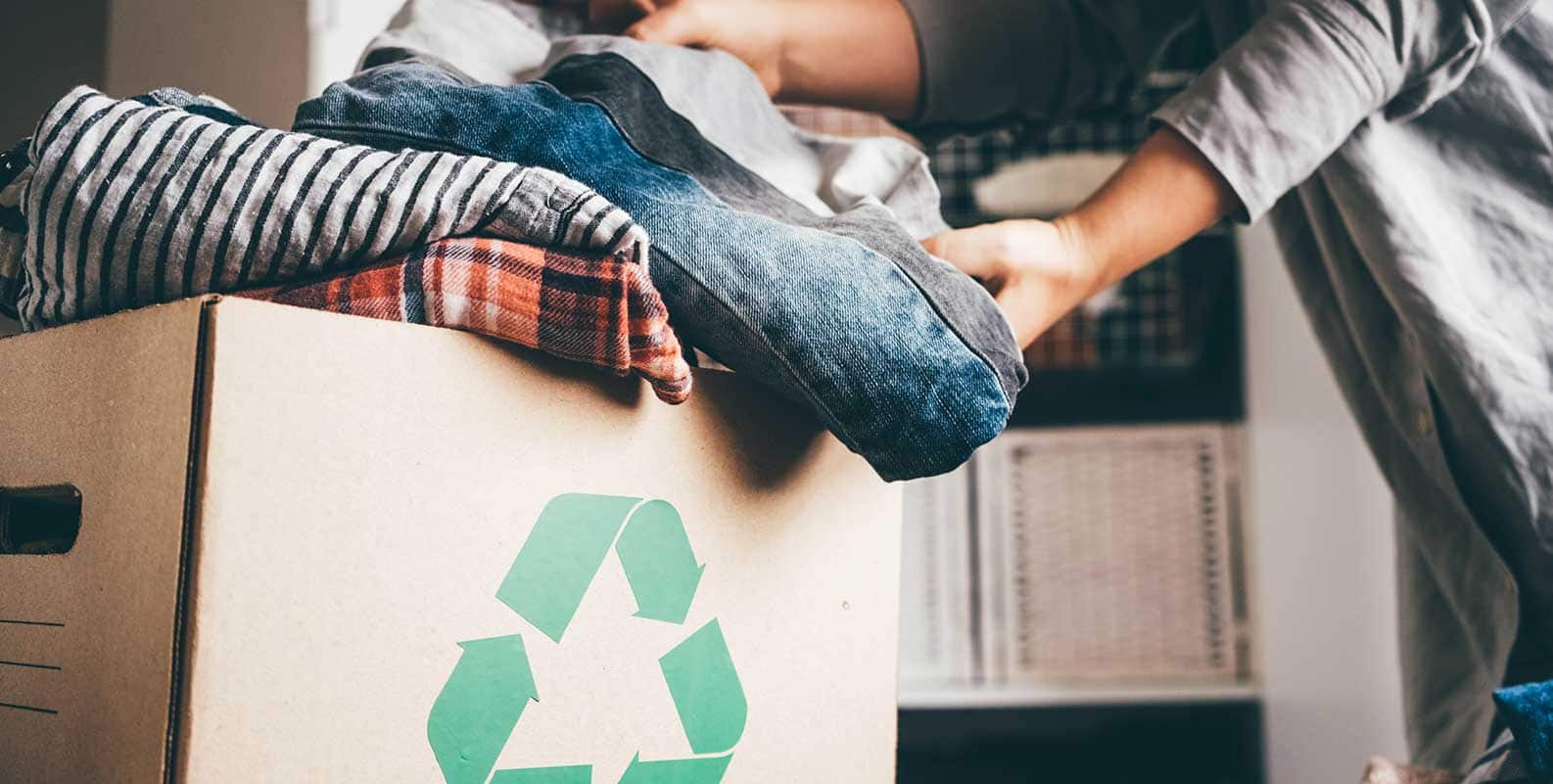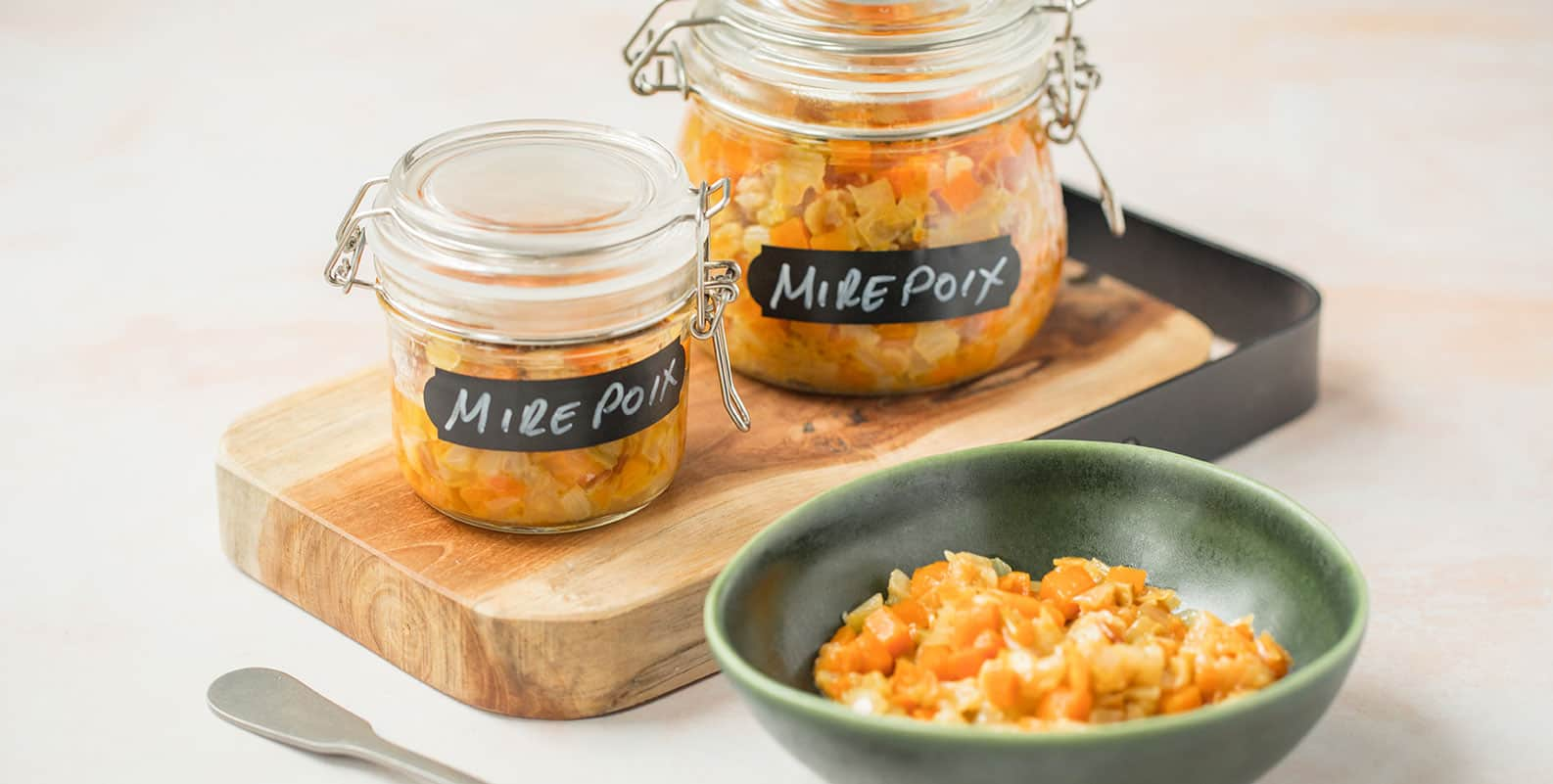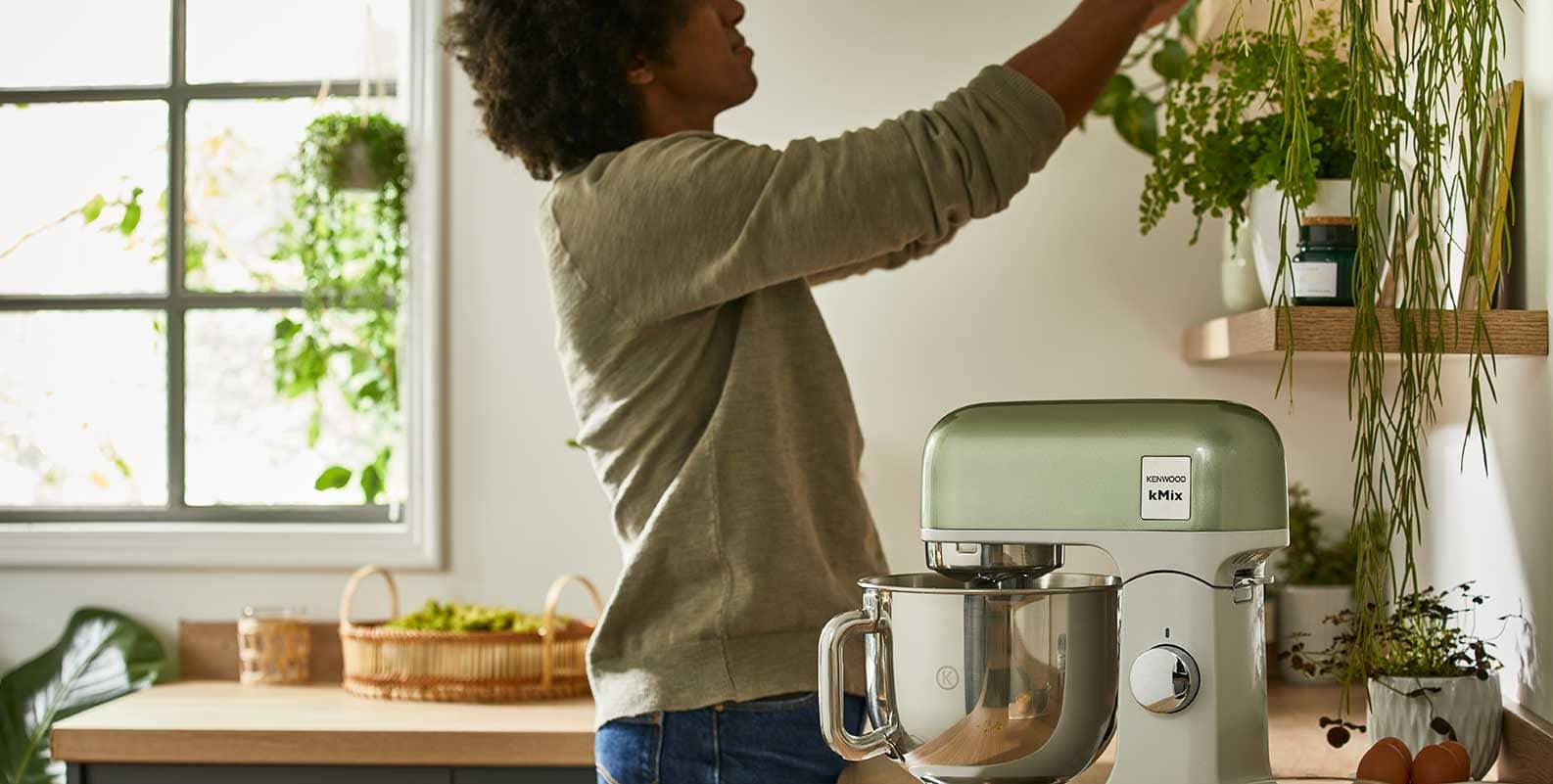Buy less, and buy better. When it comes to shopping for clothes or homewares, invest in high-quality, well-made items that you will use and love for years to come, instead of being swayed by the latest fast fashion hit or seasonal trend. Or scour pre-loved sites and shops for classic vintage pieces that are completely unique, with zero cost to the environment.
Creating timeless, innovative products that are built to last is at the heart of what we do at Kenwood. Products like our range of versatile
stand mixers are designed for you to use and enjoy for years and years, and even pass on down the generations. All our products come with at least a year’s guarantee, while many of our stand mixers and food processors are guaranteed for 5 years from purchase. Spare parts are also readily available, so in the unlikely event that something goes wrong at some stage, it doesn’t have to mean the end for your machine. And with an unrivalled range of over 25 additional attachments available to create every kind of dish, you can tailor your stand mixer to be the ultimate kitchen companion- negating the need to buy several different kitchen tools and gadgets that you may only end up using occasionally.
There are so many simple ways you can make your life greener. You can get more sustainable living inspiration and work out your individual carbon footprint
here.
